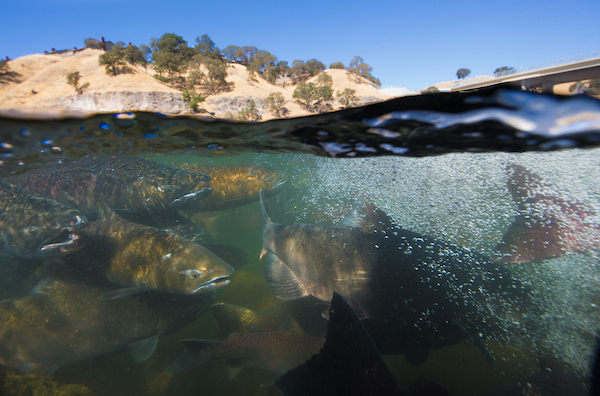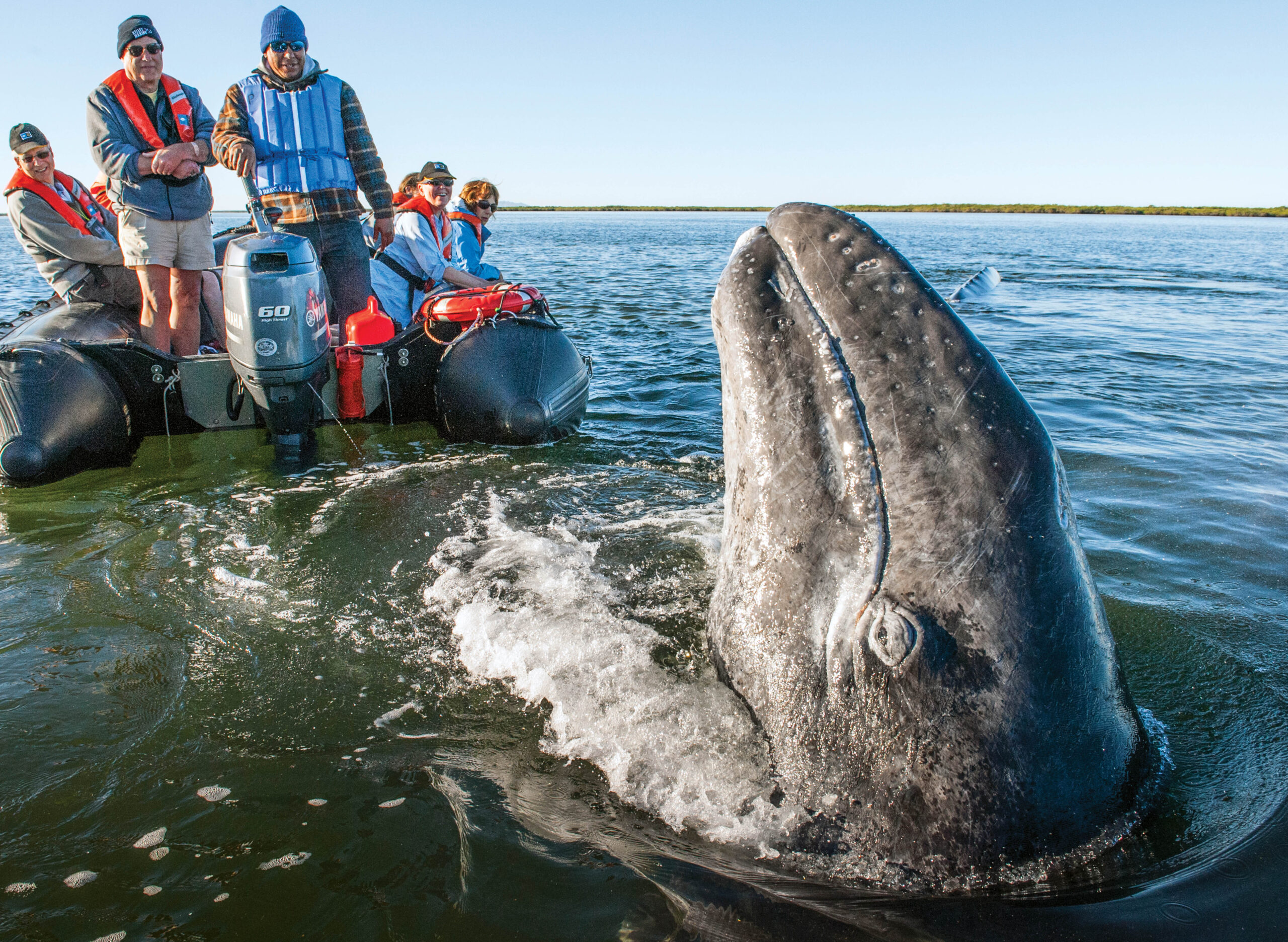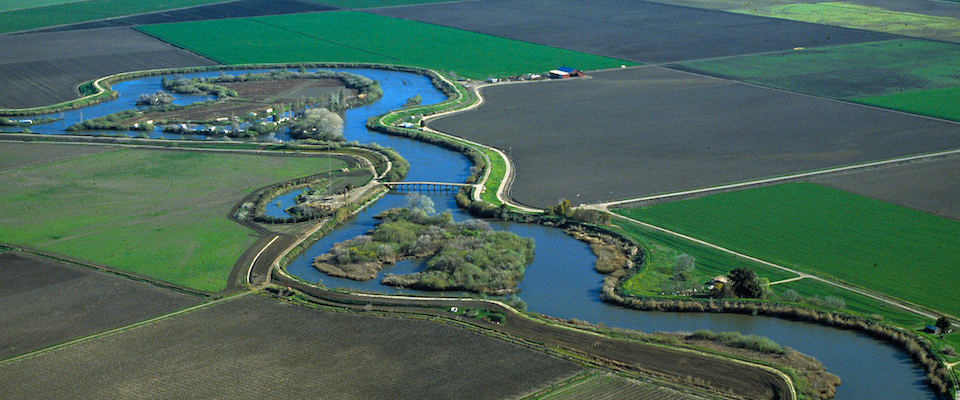The Bay-Delta, comprised of San Francisco Bay and the shared delta of the San Joaquin and Sacramento Rivers, is the largest estuary on the west coast of the continental United States. It sustains valuable salmon and Dungeness crab fisheries, supports hundreds of family farmers who work the rich peat soils of its reclaimed islands, serves as a recreational relief valve for millions of Bay Area urbanites and the main source of drinking water for around 25 million Californians.

It’s also in dire straits, beleaguered by water transfers to Southern California, development, and pollution that includes urban run-off, sewage, agricultural chemicals and fertilizers. The great runs of salmon have dwindled. The brackish “lens” that results from the commingling of freshwater flows and saltwater and is the engine of near shore aquatic life has shrunk dramatically due to water diversions for farms and cities. Indeed, the essential character of the Delta has changed from a dynamic cold water system to a warmer, more sluggish environment. Many biologists say the Delta today is ecologically closer to a lake in southern Arkansas than it is to the “aboriginal” Delta first viewed by Euro-American explorers and trappers. Indigenous cold water and brackish water species, including Chinook salmon, steelhead, green sturgeon, Pacific lamprey, Delta smelt and Sacramento splittail are struggling. Introduced warm water fish such as black bass, carp and catfish are thriving.
There have been multiple federal and state initiatives to turn things around, but they haven’t amounted to much. To thrive, the Bay-Delta needs robust “through-flows” of fresh water. But this winter’s record precipitation notwithstanding, California’s water resources are over-subscribed by several hundred percent. Powerful San Joaquin Valley agricultural interests have maintained influence at all levels of government and with both political parties. Governor Jerry Brown and Senator Dianne Feinstein, both relatively strong on environment issues, have supported water policies that largely favor corporate agriculture over the estuary’s ecological integrity. And the Obama administration did not make Bay-Delta restoration a priority.
So how is the estuary likely to fare under the Trump administration? Short answer: You might want to start perfecting those catfish recipes. A rebound in Chinook salmon—in any sensitive native species—seems remote.
Certainly, the signs so far have not been auspicious. Earlier this month, news leaked that the administration planned to cut $4.8 million in U.S. Environmental Protection Agency expenditures to clean up and restore San Francisco Bay. And during his campaign, Trump declared “there is no drought” in California, despite ample evidence to the contrary, and that San Joaquin Valley farmers were being denied water simply to protect the endangered Delta smelt, which he scorned as “…a certain kind of three-inch fish.”
For all Trump’s overt anti-environmentalism, however, his water agenda may be effectively in line with that of avowed environmentalists Brown and Feinstein. For years, Brown has obsessed over the Delta Tunnels, a behemoth project similar to the failed Peripheral Canal that will expedite delivery of Sacramento River water from the Delta to the south state. Though Brown claims the scheme will help minimize damage to Delta fish and ecosystems, most environmentalists aren’t buying it. And Feinstein is pushing legislation that would relax strictures on water transfers to western San Joaquin Valley megafarms.

“During the Obama administration, Brown and the federal agencies seemed pretty much in accord on the tunnels, and then in 2014 Jared Blumenfeld [Cal alum and U.S. EPA administrator for Region 9, which includes California] wrote a comment letter warning that they’d likely violate the Clean Water Act and may impact endangered fish, bringing the U.S. Endangered Species Act into play,” says Bill Kier, a long-established North State salmonid fisheries consultant and a Cal alum.
After Blumenfeld’s letter, said Kier, other federal agencies such as the U.S. Fish and Wildlife Service and the U.S. Department of Reclamation cooled on the tunnels, and the Brown administration was forced to regroup and cashier an ambitious wetlands restoration component of the scheme that would have given the tunnels a 50-year exemption from the Endangered Species Act. “So they’re now left with a bare-bones tunnels plan, and some lame eco-restoration schemes that won’t amount to a hill of beans. At the rate they’re going, the Jerry Brown crowd should be retired before they have to come to grips with the Bay-Delta estuary’s freshwater through-flow requirements under the Clean Water Act.”
Still, continues Kier, the prospects for the Delta are turning “darkly Trumpish. The qualified people in Fish and Wildlife [and other relevant federal agencies] are likely to take early retirements. If they really, really care about outcomes, they won’t want to be around. The new EPA administrator, Scott Pruitt, has made his living [as Oklahoma Attorney General] arguing for Oklahoma’s independence from federal regulatory control, and it’s a no-brainer that he’ll want someone in EPA’s Region 9 administrator’s position who will stand way back and allow California to do whatever it wants with the Delta, [with the support of the U.S.] Bureau of Reclamation. We’ve seen some heroes at EPA, but I don’t expect to see new ones anytime soon.”
“We think of California as a progressive state, but that’s not completely the case when it comes to water.”
Holly Doremus, a professor of environmental regulation at Berkeley Law and the co-faculty director of the school’s Center for Law, Energy & the Environment, says that it’s a bit premature to focus too strongly on Trump’s proposed environmental budget cuts.
“The administration is floating a lot of trial balloons that are highly appealing to Trump’s core supporters, but depending on push-back, they may or may not make it through,” observes Doremus. “A lot of environmental programs benefit local districts, so they have local support, and ultimately, support from representatives of local constituencies.”
That said, continues Doremus, “It’s clear the administration is no fan of the EPA and its mission, and it seems highly likely that the EPA budget will be cut severely. It’s also likely that under Trump, the EPA won’t be pushing states to do what they don’t want to do. We think of California as a progressive state, but that’s not completely the case when it comes to water. The San Joaquin Valley farmers are powerful, and they want the water. Senator Feinstein wants to give them that water, and it seems likely she’ll be able to deliver more to them.”
Doremus is particularly concerned that the present U.S. Congress will pass legislation that exempts Central Valley agriculture from the U.S. Endangered Species Act, a move that would strip environmentalists of one of their most effective legal weapons in their fight to protect and restore the Delta. But countering that possibility, she says, is a move underway in the California legislature that would make California’s Endangered Species Act as tough as its federal counterpart.
“The question,” muses Kier, “is whether, under Trump, it goes from a wicked problem in the social or cultural sense to a wicked problem in the evil sense.”
“Right now, the federal ESA is the stronger law, but SB 49 [sponsored by State senators Kevin de Leon and Henry Stern] would essentially make the state law equivalent,” Doremus says. “So if the feds cut back funding and enforcement on ESA issues, the strengthened state law could serve as a backstop. Congress may be able to preempt the state ESA, but it’s unclear they’d really want to do that.”
Kier describes the Delta as a “wicked problem,” which, as sociologists know, is a problem so complex, contradictory and resistant to amelioration that it is essentially unsolvable. “The question,” muses Kier, “is whether, under Trump, it goes from a wicked problem in the social or cultural sense to a wicked problem in the evil sense.”
Ted Grantham, an adjunct professor specializing in freshwater ecology, stream hydrology, and climate risk assessment at Cal’s Department of Environmental Science, Policy, and Management, agrees with Kier’s assessment that the Delta can never be made truly whole again.
“Part of the problem is funding,” he says. “For some reason the Bay-Delta never received the environmental funding that comparable estuaries have, such as Chesapeake Bay and Puget Sound. And of course, the proposed cuts we’re seeing coming out of the Trump administration are just going to compound the problem.”
But the bigger issues, says Grantham, are the unrelenting demands for water from powerful interests and the estuary’s fragmented and degraded ecology.
“When you look at the various plausible futures for the Bay-Delta, it’s safe to say it will never look like it did in the past, before all the reclamation, diversions and development started,” Grantham says. “Probably the best we can hope for is the preservation of certain ecosystem characteristics reminiscent of the estuary’s historical state. For example [UC Davis ichthyologist, a biologist who studies fish] Peter Moyle’s group suggests that there is an arc of habitats in the Suisun Marsh that seems fairly resistant to the changes the rest of the Bay-Delta has undergone. There are still some fairly robust native fish populations in those areas, and it may be best to concentrate our efforts in protecting and managing them in a thoughtful way.”



















